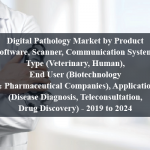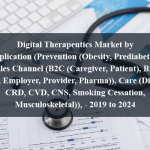OVERVIEW
The Track and Trace Solutions Market is currently valued at USD 5.5 billion in 2024 and will be growing at a CAGR of 12.2% over the forecast period to reach an estimated USD 9.8 billion in revenue in 2029. The track and trace solutions market has emerged as a critical component in various industries, ranging from pharmaceuticals to food and beverage, logistics, and beyond. These solutions enable companies to monitor and manage their products throughout the supply chain, from manufacturing to distribution and even post-sale. In pharmaceuticals, track and trace solutions play a pivotal role in ensuring compliance with regulatory requirements such as serialization, helping to combat counterfeiting, theft, and diversion of drugs. Moreover, they enhance patient safety by providing visibility into the entire lifecycle of a medication, from production to consumption. Similarly, in the food and beverage industry, track and trace solutions are essential for maintaining quality control, managing recalls efficiently, and safeguarding against contamination or adulteration. By tracking ingredients and finished products from farm to fork, companies can uphold consumer trust and meet stringent food safety standards.
Regulatory mandates, particularly in industries such as pharmaceuticals and food and beverage, are compelling companies to implement robust traceability systems to ensure compliance and mitigate risks associated with counterfeiting, theft, and product recalls. Additionally, the rise of globalization has increased the complexity of supply chains, necessitating the need for real-time visibility and transparency to track the movement of goods across borders and continents. Heightened consumer awareness and demand for product authenticity and safety are also driving adoption, as companies seek to build trust and brand loyalty by providing verifiable information about the origin and journey of their products. Furthermore, advancements in technology, such as IoT, RFID, and blockchain, are enabling more sophisticated track and trace solutions that offer enhanced data accuracy, interoperability, and scalability, further propelling market growth.
Market Dynamics
Drivers:
Regulatory mandates, particularly in industries such as pharmaceuticals and food and beverage, are compelling companies to implement robust traceability systems to ensure compliance and mitigate risks associated with counterfeiting, theft, and product recalls. Additionally, the rise of globalization has increased the complexity of supply chains, necessitating the need for real-time visibility and transparency to track the movement of goods across borders and continents. Heightened consumer awareness and demand for product authenticity and safety are also driving adoption, as companies seek to build trust and brand loyalty by providing verifiable information about the origin and journey of their products. Furthermore, advancements in technology, such as IoT, RFID, and blockchain, are enabling more sophisticated track and trace solutions that offer enhanced data accuracy, interoperability, and scalability, further propelling market growth.
Key Offerings:
Key offerings in the track and trace solutions market encompass a range of technologies and services aimed at providing end-to-end visibility and control over product lifecycles. These offerings typically include serialization and labeling solutions, which enable unique identification and tracking of individual items or batches using barcodes, QR codes, or RFID tags. Additionally, software platforms equipped with data analytics capabilities facilitate the aggregation and analysis of tracking data, empowering businesses to optimize supply chain processes, detect anomalies, and respond swiftly to incidents such as recalls or disruptions. Integration services play a crucial role in seamlessly connecting track and trace systems with existing enterprise resource planning (ERP) and manufacturing execution systems (MES), ensuring data interoperability and process efficiency. Moreover, consulting and advisory services are often provided to assist companies in navigating regulatory requirements, designing tailored track and trace solutions, and implementing best practices for risk mitigation and compliance.
Restraints :
The market for track and trace systems has a lot of room to develop, but there are a few obstacles in the way. A notable obstacle is the substantial initial expenditure linked to the deployment of track and trace systems, encompassing expenditures for hardware, software, and integration. This financial barrier may discourage adoption, especially in industries with narrow profit margins, for smaller enterprises with little resources. Furthermore, compatibility problems resulting from incompatibilities between various standards and track and trace systems might impede smooth data sharing and cooperation amongst supply chain participants. Another barrier is related to worries about data security and privacy, since the gathering and exchange of private data along the supply chain increases the possibility of data breaches or illegal access. Furthermore, organisations may face compliance burdens due to regulatory intricacies that differ by area and industry and necessitate ongoing upgrades and investments to guarantee conformance to changing standards. Lastly, organisational resistance to change and cultural hurdles to implementing new technology and procedures may impede the implementation process and prevent track and trace systems from realising their full potential. In order to fully realise the potential of track and trace technology and promote long-term industry growth, stakeholders must address these obstacles.
Regional Information:
• In North America, stringent regulatory requirements, particularly in the pharmaceutical and healthcare sectors, act as a significant driver for track and trace solution adoption. The Drug Supply Chain Security Act (DSCSA) in the United States mandates serialization and traceability of prescription drugs, driving demand for advanced track and trace technologies. Additionally, the region’s highly developed logistics infrastructure and mature healthcare industry further propel market growth. However, despite these favorable conditions, the market faces restraints such as the high initial investment costs, interoperability challenges, and concerns regarding data privacy and security. Overcoming these hurdles requires continuous innovation, collaboration between industry stakeholders, and adherence to evolving regulatory standards.
• In the Asia-Pacific region, rapid industrialization, burgeoning pharmaceutical manufacturing, and the expanding e-commerce sector are key drivers for track and trace solution adoption. With increasing concerns about product authenticity, consumer safety, and regulatory compliance, countries like China and India are witnessing a surge in demand for track and trace technologies across various industries. Moreover, government initiatives to combat counterfeit products and improve supply chain transparency further stimulate market growth.
Recent Developments:
• In August 2022, Antares Vision S.P.A. (Italy) acquired Packital Srl (Italy) & Ingg. Vescovini Srl (Italy). These two acquisitions will enable the company to further strengthen its presence in the food & beverage sector by extending its portfolio with inspection and quality control solutions that are complementary to current ones.
• In May-2022, OPTEL GROUP introduced OPTCHAIN, a set of modular intelligent supply chain (ISC) solutions designed to facilitate the seamless capture and digitization of Critical Tracking Events (CTEs) and Key Data Elements (KDEs) throughout the entire supply chain in the food and beverage industry.
Key Market Players:
Siemens AG, IBM Corporation, Optel Group, Antares Vision, TraceLink Inc., Systech International, Axway, Zebra Technologies Corporation, and Honeywell International Inc
– The Track and Trace Solutions Market is expected to reach an estimated value of USD 9.8 billion in revenue by 2029.
2) What is the estimated CAGR of the Track and Trace Solutions Market over the 2024 to 2029 forecast period?
– The CAGR is estimated to be 12.2% for the Track and Trace Solutions Market over the 2024 to 2029.
3) Who are the key players in the Track and Trace Solutions Market?
– Siemens AG, IBM Corporation, Optel Group, Antares Vision, TraceLink Inc., Systech International, Axway, Zebra Technologies Corporation, and Honeywell International Inc.
4) What are the drivers for the Track and Trace Solutions Market?
– Regulatory mandates in industries like pharmaceuticals and food and beverage necessitate robust traceability systems to prevent counterfeiting and theft. Globalization increases supply chain complexity, requiring real-time visibility. Consumer demand for authenticity drives adoption. Advancements in technology like IoT, RFID, and blockchain enhance data accuracy, interoperability, and scalability.
5) What are the restraints and challenges in the Track and Trace Solutions Market?
– The track and trace solutions market faces challenges such as high upfront costs, interoperability issues, data privacy and security concerns, regulatory complexities, and resistance to change. These factors may deter adoption by smaller companies, hinder data exchange and collaboration, and create compliance burdens. Addressing these restraints is crucial for unlocking the full potential of track and trace technologies and driving sustainable growth in the market.
6) What are the key applications and offerings of the Track and Trace Solutions Market?
– The track and trace solutions market offers technologies and services for end-to-end visibility and control over product lifecycles. These include serialization and labeling solutions, data analytics platforms, integration services, and consulting services. These tools enable unique identification and tracking of items or batches, optimize supply chain processes, detect anomalies, and respond swiftly to incidents.
7) Which region is expected to drive the market for the forecast period?
– North America is expected to have the highest market growth from 2024 to 2029
Why Choose Us?
Insights into Market Trends: Global Market Studies reports provide valuable insights into market trends, including market size, segmentation, growth drivers, and market dynamics. This information helps clients make strategic decisions, such as product development, market positioning, and marketing strategies.
Competitor Analysis: Our reports provide detailed information about competitors, including their market share, product offerings, pricing, and competitive strategies. This data can be used to inform competitive strategies and to identify opportunities for growth and expansion.
Industry Forecasts: Our reports provide industry forecasts, which will inform your business strategies, such as investment decisions, production planning, and workforce planning. These forecasts can help you to prepare for future trends and to take advantage of growth opportunities.
Access to Industry Experts: Our solutions include contributions from industry experts, including analysts, consultants, and subject matter experts. This access to expert insights can be valuable for you to understand the market.
Time and Cost Savings: Our team at Global Market Studies can save you time and reduce the cost of conducting market research by providing comprehensive and up-to-date information in a single report, avoiding the need for additional market research efforts.












